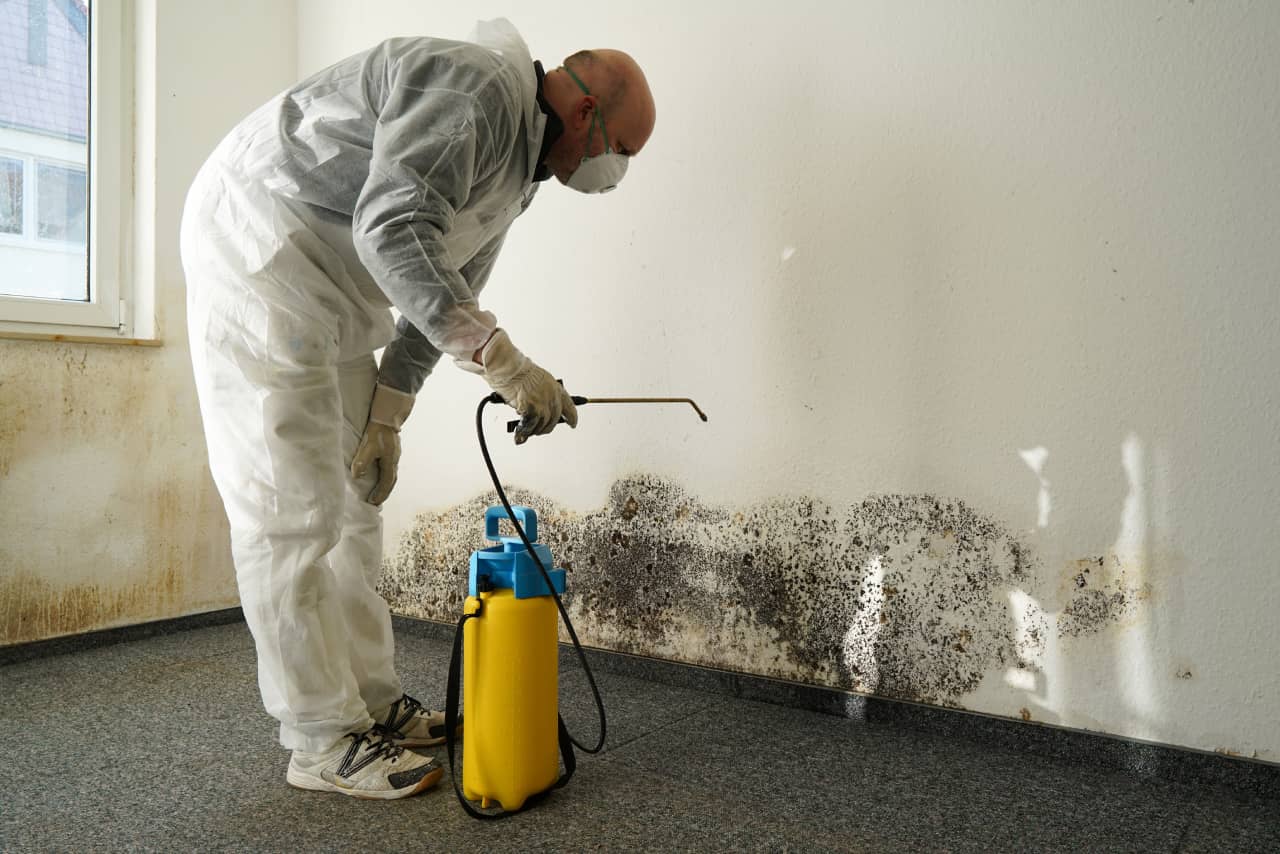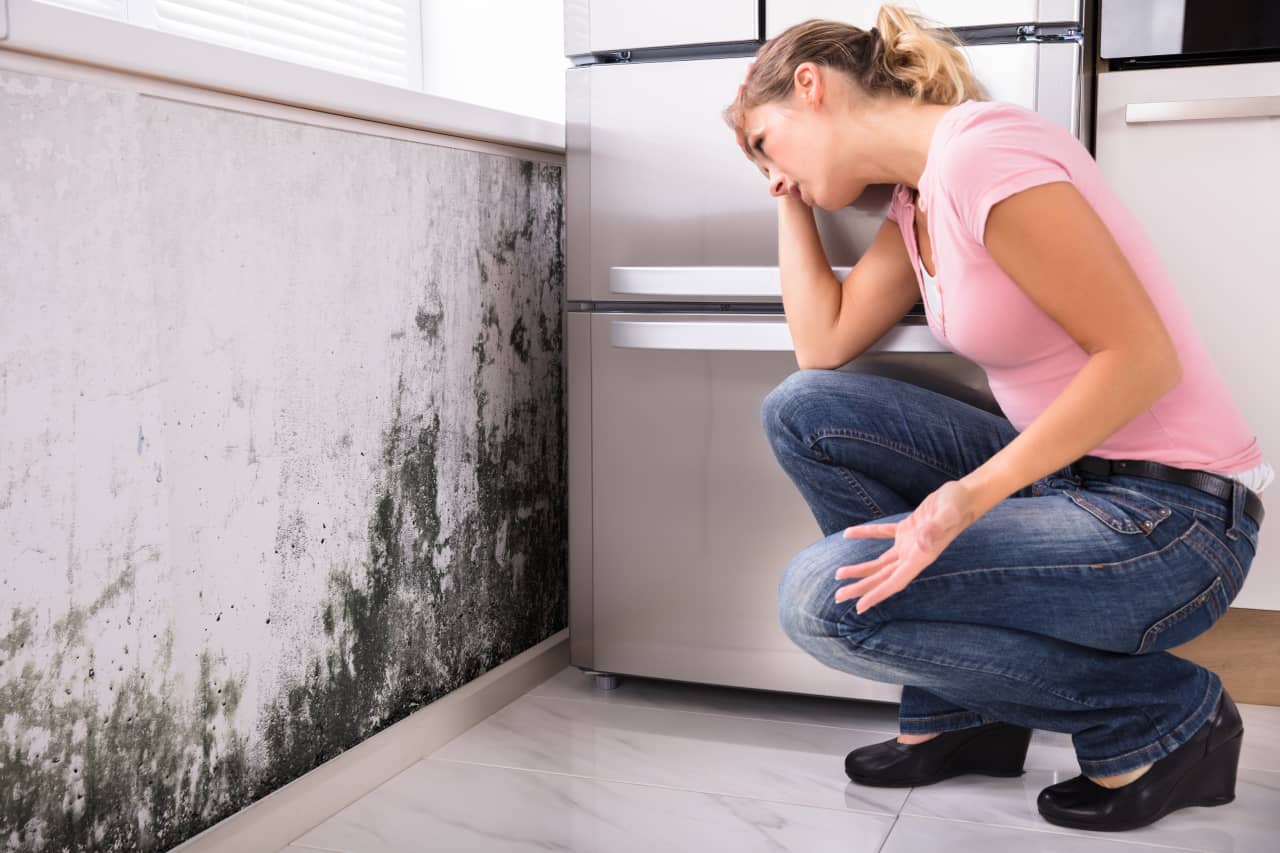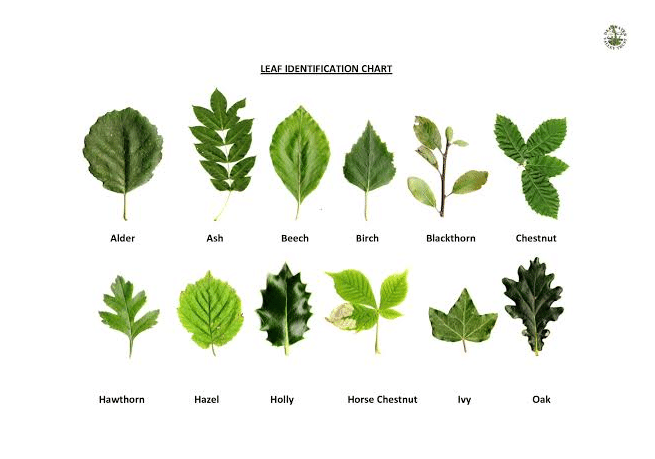Mold and mildew are both fungi, with the latter being mold that’s still in its earlier stages. In their natural habitat, these fungi are integral as they help break down organic materials such as leaves, which boosts the soil’s fertility. However, the sight of mold and mildew inside your home is the last thing you want because besides being unsightly, it also causes some health infections. These include respiratory complications such as asthma. In addition, these fungi can also cause sinus congestion, nose, eye, or throat irritation, and headaches.

With these many side effects, it’s best to prevent the outbreak of mold and mildew in your home, which starts by first ensuring all areas are dry. Therefore, let’s look at moisture control tips that can help you best control and eliminate outbreaks in your home.
1. Maintain Healthy Humidity Levels
The best way to control and completely get rid of mold and mildew in your home is by making sure to maintain healthy humidity levels in your home. Doing this is especially crucial in rooms such as the kitchen, basement, and bathroom, which typically record the highest humidity levels.
Experts at Arsidaho.com recommend that your home’s relative humidity levels should ideally range between 35% to 50%. If you live in an area with high humidity, this level should be around 55%. Anything beyond this level results creates a conducive environment that promotes the growth of mold and mildew.
2. Maintain Cleanliness As Much As Possible
Observing proper hygiene is essential to prevent mold outbreaks in your home. It would help if you did this for all areas of your home, but more so in the basement, closets, and dresser drawers where mold and mildew are more likely to grow. This way, you’ll prevent the soil on these dirty areas from providing the fungi with food which initiates if there’s a suitable temperature and moisture levels. In addition, greasy films in the kitchen can also provide the mold with the needed nutrients to foster its growth.
You also need to make sure that your clothing is clean because soiled clothing can harbor mold growth. And because many synthetic fibers, including nylon, polyester, acrylic, and acetate, are mold resistant. Therefore, making sure your clothes are always clean ensures there’s no soil at all that might provide the mold and mildew with food, thereby promoting their growth.

3. Dry The Air
Warm air carries more moisture than cool air, which creates the perfect environment for mold growth. It would help prevent such a scenario in your home by installing an air conditioning system or dehumidifier. This equipment works by sucking in warm air, cooling it, thereby drawing out all the moisture and distributing the cool, dry air back into your home. Mechanical dehumidifiers also come in handy if a room doesn’t have an HVAC system and is primarily used in the basement.
For optimal effectiveness of both dehumidifiers and air conditioners, make sure to close all the doors and windows.
4. Dry All The Wet Areas
Without moisture, there’s no chance that mold and mildew can grow. Because of this, you must always make sure to check whether there’s any area in your home that’s wet, be it a wet carpet or a damp basement. The moisture in the spaces can come about due to a leaking pipe and heavy rainfall. And to prevent such issues, you need to dry these spaces as soon as possible, ideally within 24 to 48 hours. You should also dry all the soaked items in water, such as furniture, bedding, and carpets.
When cleaning your home, you must confirm that the surfaces have been dried properly. Otherwise, any moisture might create a conducive environment for mold growth. The same also applies to wet clothes, which you should always dry ideally by hanging them outside due to the excellent circulation. This way, you can ensure the clothing won’t get mold-infested.
5. Repair Or Clean The Roof Gutters
The gutters need to be cleaned from time to time, or else they’ll, over time, get blocked by the branches, leaves, and other wastes from the roof and any nearby trees. Water doesn’t flow smoothly when this happens, resulting in water falling along the walls or the nearby foundation. This dampness creates an environment that promotes the growth of mold and mildew.
It would help to inspect your gutters regularly to check for possible damage. If there’s an issue, repair it immediately to prevent water from leaking through to create water stains where mold can grow.
6. Point Water Away From Your Home
When the ground area surrounding your home isn’t tilted correctly, it eventually creates a space where water will start to accumulate. This water might someday find its way into the basement or crawlspace. If this does happen, the humidity level in the basement increases, thereby creating a conducive space for fungi growth. And knowing how quickly mold can grow, the issue can quickly spread to other areas of your home.
7. Ensure Proper Ventilation
Some routine domestic activities such as taking a shower, doing laundry, and cooking create a highly moist environment. As a result, the different rooms, be it the laundry room, kitchen, or bathroom, become more susceptible to mold and mildew growth. However, you can prevent this from happening by ensuring these spaces are well-ventilated. Doing this helps prevent moisture flow to other rooms in your home.
You can improve ventilation across the different rooms by opening one or two windows. You don’t need to do this for an extended duration because 5 to 15 minutes is equally okay. Opening the windows promotes the flow of fresh air that removes any stuffiness, reduces the odor, and dries out the moist and dump areas.
8. Wipe Shower Door And Windows After Showering
The humidity levels right after taking a shower are typically very high, and it’s easily noticeable because the shower doors and walls will be dripping with moisture. And because this creates a suitable condition for mold growth, you need to clean wipe them down once you’re done showering. Likewise, it would be best to leave the bathroom doors open to allow for the flow of air inside, which helps avoid mold growth.
9. Use The Right Paint
The walls of your home are very prone to mold growth, more so when using wallpaper or some paints. With this in mind, you should paint rooms that often have high humidity levels designed for humid conditions. This way, you save yourself the cost of replacing the paint often and the hassle of dealing with mold outbreaks.
10. Pinpoint Areas In Your Home Prone To Mold Growth
While it’s almost impossible to completely mold-proof your home, you can make it resistant to the growth of this harmful fungi. This doesn’t have to be difficult and can be done by doing assessments such as:
- Inspecting the ceiling for constant leaks or water stains;
- Checking whether your basement floods; and
- Examining if there’s condensation on the upstairs window.
After determining all this, you’ll be better positioned to know the most appropriate measures to prevent mold growth. It would be best if you considered some viable solutions like:
- Removing the carpet from the moist basement.
- Repairing destroyed gutters.
- Waterproofing your home.
- Installing mold-resistant items.
Although all this might cost a considerable sum of money, it’ll certainly be worthwhile considering how devastating mold can become if not kept in check.
11. Cover The Crawlspace Floor
The crawlspaces in your home are spaces through which water and moisture can find their way into your home, hence increasing the humidity levels. And to prevent this, you need to cover the crawlspaces, ideally using a plastic vapor barrier such as the six-mil polyethylene. This way, you’ll certainly prevent water from finding its way into your home and causing a rise in the humidity levels.
12. Remove Clutter
Every homeowner is guilty of having several items that they barely use sitting somewhere within the house. If you want to prevent mold growth best, you must never do this because these many items in your home hinder the proper flow of air. This is the case even if you switch on your air conditioner. As a result, the rooms in your home become moist, and this is an ideal state which increases the chances of mold growth.
13. Install Hard Flooring
It’s no doubt that carpets feel comfortable and warmer when on the floor of your home. However, carpets are also guilty of trapping and collecting moisture and this, in the long run, creates a suitable setting for mold growth. If you wish to avoid such an issue, it’s best to remove the carpet and install hard flooring. This does an adequate job of ensuring the mold in your basement doesn’t eventually find its way from your basement.
The Takeaway
Leaks in the walls, ceilings, and plumbing systems create a humid state inside your home. When coupled with high temperatures, this makes the perfect environment for the growth of mold and mildew. And to prevent this from happening, it’s best to take proactive moisture control measures. This guide has been written precisely by detailing the moisture control tips that can help you prevent and get rid of mold and mildew in your home.



